The construction industry is no stranger to adverse weather conditions, and rain is among the most challenging to handle. However, handling these tough situations, especially in rain-soaked environments, calls for the right kind of safety gear. Enter rain gear: sturdy, dependable, and designed to thrive in the harshest of conditions.
While rain gear's essential purpose is to keep one dry, their value in the construction industry goes beyond avoiding a drenching. But what makes rain gear so important? And what are the essential features to look for when selecting the perfect rain gear for construction purposes?
In this article, we'll delve into why high-quality, tear-resistant rain gear is crucial for work safety in the construction industry. We'll also examine key features of rain gear and how they contribute to a safer workplace, the testing that rain gear undergoes to ensure its durability, and what materials are best for these protective items. Additionally, we will explore the difference between waterproof and water-resistant gear, how these match up in the construction industry, and how to choose the right gear.
So let's venture into the world of rain gear, unraveling its importance, capabilities, and potential in facilitating safer construction environments. Come rain or shine; the right gear can make all the difference!
Join us as we embark on a journey, exploring the ins and outs of rain gear for the construction industry. Let's get started!
Significance of Rain Gear in Construction Industry
There's little argument in the construction industry about the growing popularity and importance of suitable rain gear. Wet weather conditions bring both risks and inconveniences to job sites that can be mitigated with the right protective clothing. As a result, high-quality, well-detailed, and durable rain gear has become indispensable in the construction sector.
Rain Gear Market Value
In 2022 alone, the rainwear market for construction workers stood at a whopping $3864.7 million. This impressive figure underscores the necessity and demand for rain gear in this industry. Rain gear not only ensures the safety and protection of workers but also contributes significantly to productivity levels. When equipped with appropriate waterproof attire like the Importance of Tear-Resistant Rain Gear discusses, construction workers can carry out their tasks confidently, regardless of the weather conditions.
Projected Growth of Waterproof Breathable Textiles Market
But it's not just the present scenario that's significant; the future of rain gear in the construction industry looks incredibly promising too. The global waterproof breathable textiles market, majorly attributing to rainwear, is projected to grow at a Compound Annual Growth Rate (CAGR) of 5.7% from 2023 onwards. This growth is expected due to the persevering innovation in textile technologies that manufacture convenient, comfortable, and resistant rain gear.
Consider breathable waterproof textiles — these aren't simply resistant to water; they also allow for ventilation, ensuring workers don't overheat while they're shielded from the rain. It's advancements like these that secure outstanding growth in this market, making it a lucrative industry for investors.
From the value it brings on an individual level to its contribution to the global economy, the significance of rain gear in the construction industry is undeniable. As long as the rain continues to pour, the demand for this essential protective gear will continue to rise — strengthening its market value and driving advancements in textile technologies. Hence, this clear trajectory of growth makes the rain gear industry a promising area for further research and investment.
Key Features of Rain Gear
When planning an outdoor activity, one doesn't need a crystal ball to predict that the rains will pour at some point. Whether it's your morning jog, a hiking trip, or a construction project, having the right rain gear is not a mere convenience but a necessity. This apparel holds the power to transform a potentially sloppy, wet ordeal into a seamless, even enjoyable experience. But what makes good rain gear stand out from the rest? Here are four essential features to look for.
Waterproof and Breathable Materials
First and foremost, any good rain gear must be waterproof. This might seem like an obvious requirement, but it's surprising how many 'waterproof' items will leak at the slightest hint of a downpour. While being impermeable to water, the material should also be breathable to allow sweat to escape and prevent a clammy feeling inside the attire. Look for gear made from fabrics that offer this perfect balance like Gore-Tex or eVent.
Durable Construction
The second feature to consider is the construction of the garment, which plays a substantial role in its durability. The seams should be fully taped to prevent water from finding its way in through the stitching lines, reflecting careful craftsmanship. A well-built rain gear item will last you through many seasons of use. If you want an exceptional example of rain gear amalgamating sturdiness with functionality, delve into the topic of Safety with Durable Rain Gear.
Reflective Elements
Another key feature to look for, particularly if you intend to use your rain gear for evening or night-time activities, is reflective elements. These parts ensure you are visible to drivers and other road users in low light conditions. Truly, in hazardous weather conditions, it's always better to be safe than sorry!
Tear-Resistant
Lastly, choose rain gear that offers tear-resistance. Remember, the goal isn't just to stay dry but also to have a gear that lasts. Tear-resistant fabric tends to stretch slightly under stress instead of breaking, making it a winning option for high-intensity activities like construction work or adventure sports.
Without a doubt, rain gear is no longer just about keeping the rain out; it's about comfort, safety, and durability. So, when you next head out shopping for this essential piece, be sure to remember these features. After all, the right gear can be your best friend in those unexpected, sometimes unavoidable, rain showers. Besides, there's no such thing as bad weather, only inappropriate clothing!
Testing of Rain Gear
Are you keen on exploring deep woods, climbing steep mountains or perhaps road tripping during the rainy season, but the capricious weather is dampening your enthusiasm? It sounds like you need to invest in some high-quality rain gear! In this piece, we'll shed light on how rain gear is tested to ensure it stands stiff against the toughest weather conditions.
Abrasion Test
First and foremost is the abrasion test. It's a rigorous technique used to evaluate the durability and tear-resistance of the rain gear. Beyond just deflecting water, your gear should also withstand the rough and tumble of outdoor activities. Therefore, gear is subjected to continuous rubbing against other fabrics to simulate real-life situations. The longer the fabric retains its integrity, the greater its durability, which translates to longer-lasting protection for you against the elements.
Zip Test
Next up is the zip test. Even the strongest rain gear is ineffective if the zips fail to secure it properly. That's why manufacturers conduct zip tests to ensure zippers can withstand numerous cycles of opening and closing without losing their functionality. After all, a zip failure could create a pathway for water infiltration, negating the purpose of your rain jacket.
Exposure to Various Weather Conditions
Finally, for a comprehensive evaluation, your perfectly constructed, abrasion-tested, zip-secured rain gear goes through exposure to various weather conditions. This includes high winds, torrential rains, freezing temperatures, and even intense heat. This rigorous exposure ensures your rain gear can hold its own against Mother Nature, keeping you dry and comfortable, whatever the weather.
Understanding how your rain gear goes through different layers of testing will give you an idea about the efforts manufacturers put in to ensure your safety. The gear that passes all these stringent tests ends up being the Tested and Approved Rain Gear, providing maximum protection and comfort for outdoor enthusiasts.
With such thoroughly tested rain gear, unpredictable weather will no longer hold you back. So get the gear, step out, and let the adventure begin. Rain or shine, you're ready for it!
Waterproof vs Water-Resistance in Rain Gear
Imagine this: You're on a refreshing solo hike on a mountain trail. Suddenly, the weather takes a turn, and a heavy downpour threatens to dampen your outdoor escapade. Luckily, you've packed your rain gear. But wait; is it waterproof or merely water-resistant? Let's dive into this question and help you understand the difference.
When it comes to rain gear, these two terms are often interchanged. Though they might seem similar, there exists a substantial difference between waterproof and water-resistant materials, especially concerning durability and protection levels.
Water-resistant gear is intended to resist water to some extent, not entirely. These are made with tightly woven fabrics (like nylon and polyester) that can defend against mild to moderate rainfall. However, in case of a heavy downpour, water-resistant gear might not shield you adequately.
Contrarily, waterproof gear is designed to provide full protection against any amount of rainfall. It’s constructed with materials that have undergone special treatment to resist water penetration. No H2O can make its way through, hence keeping you dry even amidst the heaviest storm.
Here are the key differences between water-resistant and waterproof gear:
- Protection Level: Water-resistant gear can handle light to moderate rain, while waterproof gear is designed to withstand even heavy rainfall.
- Breathability: Though waterproof gear provides higher protection, it’s usually less breathable than water-resistant gear. Hence, the latter might be more comfortable to wear for extended periods.
- Weight: Water-resistant gear tends to be lighter and more flexible, making it convenient for hiking and other outdoor activities.
- Price: As expected, waterproof gear tends to cost more than water-resistant ones due to the high-grade materials and processes involved.
"Always remember, you get what you pay for. To enjoy all-round protection, you might need to spend an extra buck."
Eventually, when choosing between waterproof and water-resistant rain gear, your decision should hinge on the specific activity and weather conditions you expect. If you are to venture into heavy rainfalls, a robust waterproof item might be the right choice. Conversely, for light showers and more physical activities, water-resistant gear would probably serve you well due to its breathability and flexibility.
A noteworthy tip to remember deals with balancing waterproof and breathable materials for optimal protection. As an example, water-resistant gear might not withstand heavy rain, but can provide you with the perfect mixture of protection and breathability.
By understanding the dissimilarities between waterproof and water-resistant gear, you are now equipped to make an informed choice that protects and suits your adventure needs, keeping you dry and cozy through rain and shine.
Material Options for Rain Gear
When it comes to braving the elements, the right gear is everything. It empowers you to take on the challenges mother nature throws at you with confidence. And no material embodies this better than the one used in rain gear. So let's explore the top material options for rain gear, namely: Rubber, PVC Coating with Polyester, and Synthetic Fabrics.
Rubber
Once upon a rainy day, rubber was the go-to choice for all things water-resistant. Known for its superior waterproofing abilities, rubber rain gear can keep you dry even in the heaviest of downpours. But it's not all sunshine and rainbows with rubber. The material can be quite heavy, and lack breathability. This means that while you'd stay dry from the rain, you might end up soaked in your own sweat.
Advantages of Rubber:
- Excellent water resistance
- Durable and long-lasting
Disadvantages of Rubber:
- Can be heavy
- Lacks breathability
PVC Coating with Polyester
If you're after a middle ground between water resistance and breathability, a PVC coated polyester could be an excellent choice. This material is made by applying a layer of PVC (Polyvinyl Chloride) onto a polyester fabric. The result? A material that blends the best of both worlds – the waterproofing of PVC and the lightweight, breathable nature of polyester. Just keep in mind that PVC can be less environmentally friendly than other options.
Advantages of PVC Coating with Polyester:
- Balances water resistance and breathability
- Lightweight
Disadvantages of PVC Coating with Polyester:
- Less environmentally friendly
Synthetic Fabrics
Enter synthetic fabrics like nylon and polyester, the rising stars in the rain gear material world. These fabrics are not just light; they're also extremely durable, breathable, and when coated with a water-repellant, will keep you dry. However, even though these fabrics have many advantages, they may not provide the same level of waterproofing as other options like rubber or PVC coated polyester.
Advantages of Synthetic Fabrics:
- Lightweight and breathable
- Durable
Disadvantages of Synthetic Fabrics:
- Might not provide the same level of waterproofing
So, weather it's rubber, PVC coated polyester, or synthetic fabrics, each material has its benefits and drawbacks. The trick to picking the right one lies in knowing the environment you'll be facing, the kind of use you expect from your gear and, of course, your personal preference. After all, the best rain gear is the one that keeps you dry and confident, come rain or shine.
Safety provided by Tear-Resistant Rain Gear
Does the pouring rain mean construction work has to come to a halt? Not necessarily. Just as a good soldier never abandons his post, the modern construction industry doesn't always shut down due to bad weather. This ongoing operation is partly made possible by the increasing usage of innovative rain gear. More specifically, tear-resistant rain gear has proven to be a game changer, providing immense safety benefits for those in the construction industry.
Contrary to popular belief, tear-resistant rainwear isn't just about keeping workers dry. It's an essential part of their safety equipment. This innovative attire limits the risk of various job-related accidents that could lead to injuries, or even worse, fatalities. Let's delve deeper into why tear-resistant rain gear is becoming a must-have in the construction industry.
Reducing Slippages
First off, the tear resistance of the rain gear aids in minimizing the risk of slips and falls by keeping the workers dry. With conventional rainwear, water often seeps in through the cracks, making the clothing heavy and slippery. This causes a heightened risk of a potentially perilous slip. However, tear-resistant gear eliminates this risk thanks to their unyielding resistance against heavy rainfall.
Increased Visibility
Moreover, most tear-resistant rain gear is designed to be high-visibility. This makes workers easily identifiable even during inclement weather and grey days, dramatically reducing the likelihood of accidents on the work site. It’s features like these that demonstrate how tear-resistant rain gear doesn't merely provide protection from the elements, but instead offers holistic safety to its wearers.
Durability
Lastly, let's touch on durability. If you've ever owned a standard raincoat, you're probably familiar with how easily they can rip or tear. Now, consider the considerable demands of a construction site; the standard raincoat doesn't stand a chance. Tear-resistant rain gear, on the other hand, is explicitly designed to weather the storm. High-quality material combined with skilled craftsmanship ensures long-lasting use that neither rips nor tears.
In the words of Benjamin Franklin, "An ounce of prevention is worth a pound of cure." A mere raincoat might seem insignificant, but the reality is that by preventing accidents, the use of tear-resistant rain gear prevents injuries or deaths among construction workers. The men and women who build our cities deserve the very best in safety equipment, and it's clear that tear-resistant rain gear is a smart investment for any construction operation prioritizing worker safety.
Rain Gear Options and Choosing the Right Gear
When it's pouring outside, having suitable rain gear can turn a potentially challenging outing into a walk in the park, quite literally. As much as various types of rain gear exist in the market today, the decision on the most suitable one depends heavily on your specific needs. In this context, we'll explore a few popular choices such as rubber, PVC, and high visibility rain gear, as well as lightweight waterproof jackets. Each type has its unique advantages that may tip the scale towards your ultimate choice.
Rubber Rain Gear
Rubber rain gear remains a classic, offering 100% waterproof protection in many different situations. These outfits usually consist of a waterproof coat or poncho alongside matching trousers or overalls, both made of rubberized fabric. Invest in these heavy-duty items when you need hard-wearing protection from the elements. However, bear in mind that they might lack breathability and can be pretty hefty to wear.
PVC Rain Gear
If you are seeking a perfect balance between strength and suppleness, PVC rain gear might be your best bet. These items, made from a blend of fabric and plastic, are incredibly resilient yet flexible. Moreover, PVC gear is resistant to a variety of substances such as oils and chemicals, making them an excellent choice for construction workers or anyone dealing with hazardous elements.
High Visibility Rain Gear
Putting safety first is always an excellent idea, and there's no better way to embody this than choosing high visibility rain gear. These fluorescent outfits not only keep you dry but also ensure you're seen in gloomy weather conditions. From road workers to mountain trekkers, high visibility rain gear benefits anybody who needs to be conspicuous during stormy weather.
Lightweight Waterproof Jackets
For those seeking a blend of comfort, versatility, and sufficient water resistance, lightweight waterproof jackets are the answer. These weatherproof solutions are excellent for activities that require mobility and low bulk. They provide adequate protection while being easy to pack and carry, perfect for those unexpected showers during your outdoor adventures.
When choosing rain gear for construction workers, factors such as durability, weight, breathability, and job-specific needs should be considered. Markedly, paying attention to the details will significantly aid in Choosing the Right Rain Gear. In the end, it’s all about finding the perfect fit for your specific needs in the varied world of rain gear. It's worth investing extra time and effort to ensure ultimate comfort during those dreary, wet days.
Investment and Innovation in Rain Gear for Construction
Despite the many challenges faced in varying weather conditions, construction must press forward. One instance where the weather can become a major hinderance is during the rainy season. Although in such conditions, a set of high-quality, tear-resistant rain gear comes to the rescue. Investing in top-notch rain gear is not an option but a necessity in the construction industry, protecting workers from discomfort and illness.
With continuous technological advancements, manufacturers strive to enhance their offerings by focusing on developing innovative materials, improving functionality, and creating a comfortable wearing experience, all to ensure worker safety and productivity.
A Blend of Innovation and Investment
Investments in rain gear have gone beyond mere expenditure on readily available products. These strides toward innovation have brought about better and more efficient gear, thus ensuring the safety and productivity of construction personnel effectively even in the wettest conditions.
Key areas of this revolutionary innovation include:
- Material: Manufacturers now prioritize highly resistant, breathable fabrics ideal for heavy-duty work. Modern rain gear emphasizes durability and tear-resistance, equipped to endure harsh outdoor conditions.
- Functionality: The functionality of gear gets a facelift with features like cargo pockets, vented back and underarm zips, and adjustable cuffs. These additions provide convenience and comfort, increasing job efficiency.
- Weight: Heavy rain gear can restrict movement and decrease productivity. Acknowledging this, manufacturers focus on reducing garment weight without compromising protection levels.
As We Peek Into the Future
Naturally, one might wonder what lies ahead on the horizon of Rain Gear Innovations for Construction. A safe prediction is that advancements in materials and design technologies will continue to lead the way, producing gear that optimally meets the demands of the construction industry.
In any case, investing in quality rain gear for construction is forecasted to remain an enduring trend. Not only due to the evident need for protection but also within recognition of workers' comfort and well-being - the backbone of any successful construction project.
Conclusion
Safety and functionality are paramount when it comes to the ultimate rain gear to support your construction needs. Armed with the right knowledge about the diversity in materials and their unique features, you can successfully navigate the selection process. As you've read, there are several trusted and established rain gear options catered towards the needs of the construction sector.
At the end of the day, investing in high-quality, durable, and wear-resistant rain gear brings about long-term savings and ensures a safer working environment. Look no further than the handcrafted, resilient gear from Hurricane Raingear that bridges the gap between comfort, functionality, and safety. The waterproof, breathable, and rip-resistant features have earned the trust of thousands of our customer base.
Ultimately, the construction industry's growth and advancements call for durable weather gear that can withstand the elements and provide a shield for workers. While procuring rain gear might seem like an immense upfront expenditure, it's an investment worth making for the safety, productivity, and comfort of your workforce.
For high-quality, resilient, North-American-Made rain gear, consider our offerings at Hurricane Raingear. Stay dry, comfortable, and protected regardless of the weather extremes. Always choose safety and quality because in the construction industry, every second count and every degree of safety matters.
Frequently Asked Questions
-
What is tear-resistant rain gear?
Tear-resistant rain gear is specially designed clothing made from durable materials that can withstand tearing or ripping when exposed to harsh conditions, such as heavy rain, wind, and rough surfaces.
-
Why is tear-resistance important in construction rain gear?
In construction, workers are often exposed to harsh weather conditions and rough environments. Tear-resistant rain gear provides an extra layer of protection against tearing, ensuring the safety of workers and preventing the gear from becoming ineffective during use.
-
What are some common materials used in tear-resistant rain gear?
Common materials used in tear-resistant rain gear include nylon, polyester, PVC, Gore-Tex, and other synthetic fabrics known for their strength and durability.
-
Can tear-resistant rain gear be comfortable to wear?
Yes, tear-resistant rain gear can be engineered to provide both protection and comfort. Look for gear that is breathable, lightweight, and has features like adjustable cuffs and ventilation to prevent discomfort during extended wear.
-
How do I choose the right tear-resistant rain gear for construction?
When selecting tear-resistant rain gear for construction, consider factors such as the construction site's specific hazards, durability, waterproofness, breathability, comfort, and the compatibility of the gear with other safety equipment. Opt for gear that provides optimal tear resistance without compromising on comfort and functionality.



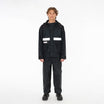



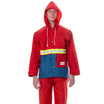


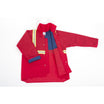

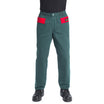



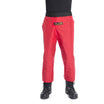





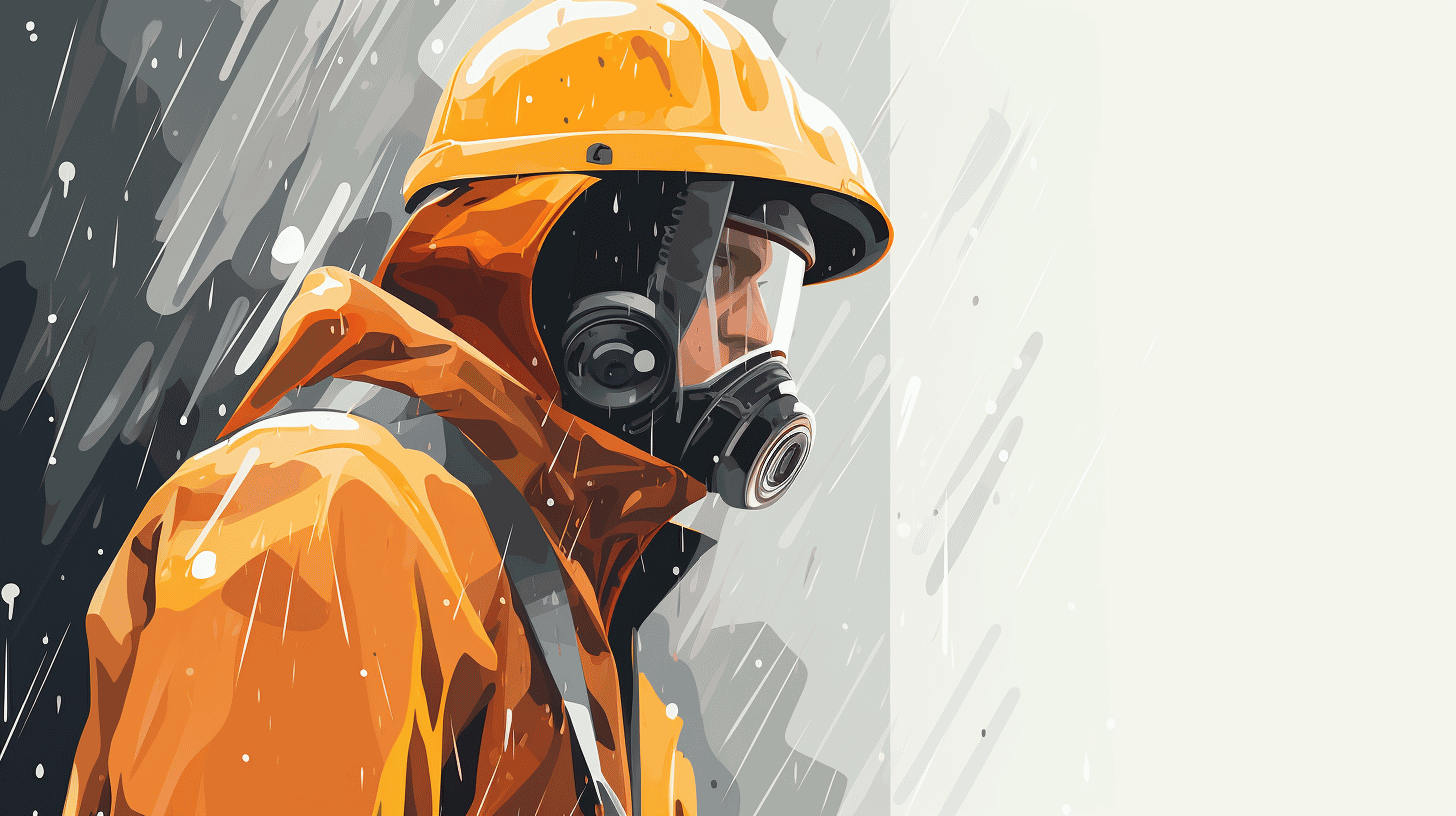
Leave a comment
This site is protected by hCaptcha and the hCaptcha Privacy Policy and Terms of Service apply.